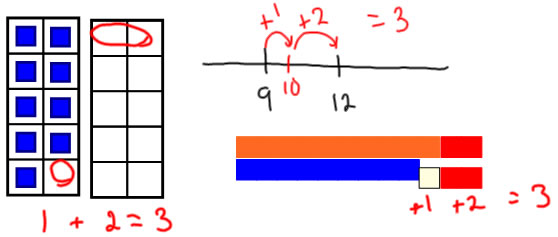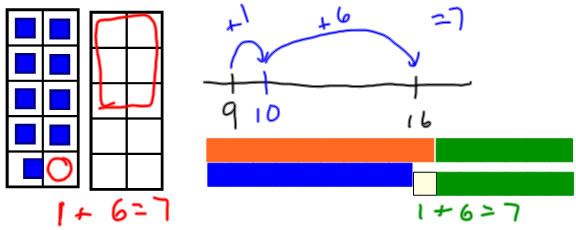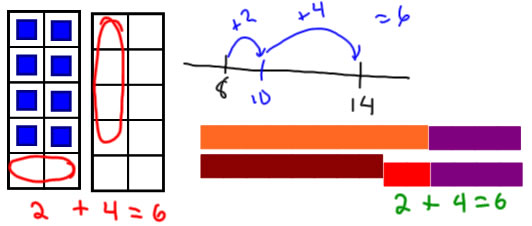Basic Facts Lesson 2.10: Build up through ten to subtract
Adding up to using 10 to subtract is one of the more important subtraction strategies, because it helps children use the connections between addition and subtraction. When doing 12-9 by adding up to, we think 9+__=12. We use 10 to help us get from 9 up to 12:
Some good ways of showing this are to use representations that emphasize 10. My examples here are ten frames, open number lines and Cuisenaire rods.
In each case, the first step is to get from the part (9) up to 10 (9+1=10).
The next step is to get from 10 up to the whole (10+2=12).
Then we put together the parts we used to get from the part to the whole (1+2) to find the missing part (3).
If we were just using numbers/equations we would write:
9+1=10
10+2=12
1+2=3
so 12-9=3
|
 |
The really nice thing about this strategy is that it works well with larger wholes: 16-9 isn't much more difficult than 12-9.
9+1=10
10+6=16
1+6=7
so 16-9=7
|
 |
Subtracting 8 works well with this strategy too, because 8 is also close to 10.
8+2=10
10+4=14
2+4=6
so 14-8=6 |
 |
Notice, when I represent the strategy just with number sentences I use one number sentence for each idea:
Add up from the part to 10
Add up from 10 to the whole
Add the two parts that you added on
Say the answer
There are two different phrases I use to describe this strategy. This is an "Adding Up To" strategy, because we are getting from the part to the whole by adding on to the 9. This is also a strategy where we "Use 10" because our stopping off point between the part and whole is 10.


